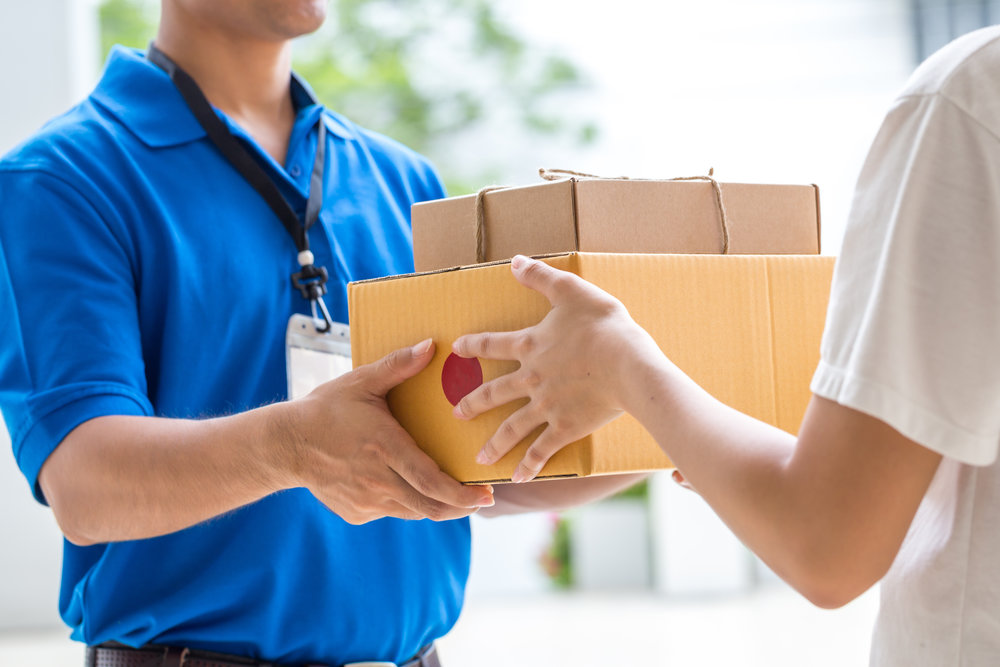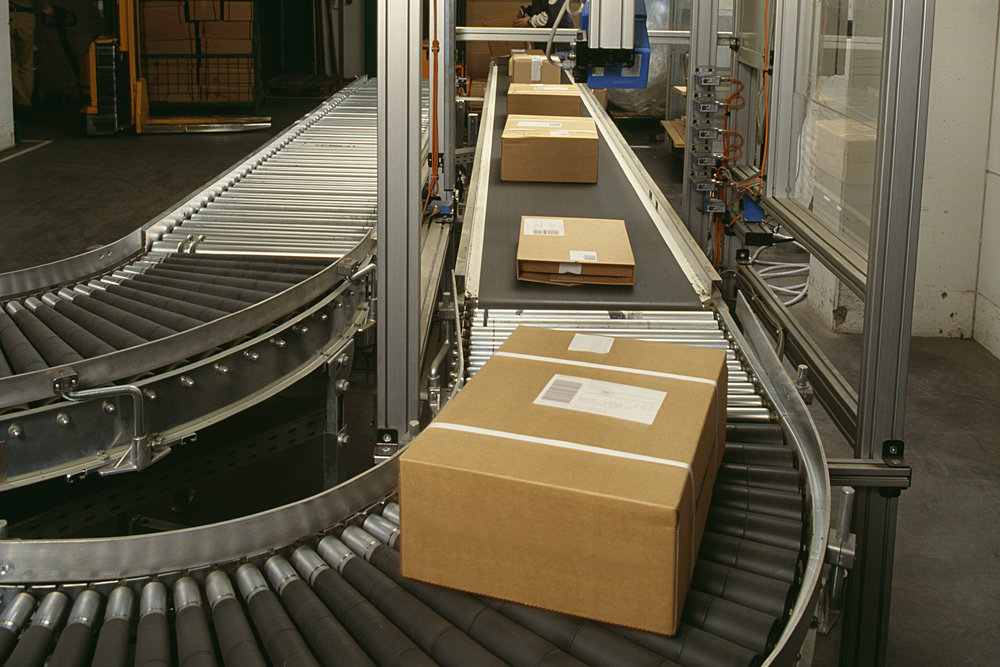Wasp Barcode Technologies: The Barcode Solution People
How Small Businesses Can Survive the Age Of Free Shipping
 It’s not easy for small businesses that sell online—or exist at all, really—to survive in the shadows of retail giants like Amazon, Wal-Mart, and Target. The giants have too much economy of scale, bigger advertising budgets, and cozy relationships with logistics companies that cut them deals. No part of the online shopping industry represents this advantage better than the concept of free shipping.
It’s not easy for small businesses that sell online—or exist at all, really—to survive in the shadows of retail giants like Amazon, Wal-Mart, and Target. The giants have too much economy of scale, bigger advertising budgets, and cozy relationships with logistics companies that cut them deals. No part of the online shopping industry represents this advantage better than the concept of free shipping.
Somehow, free shipping is something consumers have begun to take for granted. Most companies offer it to customers who buy a certain amount of merchandise, though some will offer it promotionally on all orders. Amazon gives it to its Prime members, who pay $99 a year, on every order—but people tend to share their Prime accounts so much (to the point that the company had to limit sharing) that shipping costs have become, for some, an afterthought, a vestige of the past.
As any small business owner can tell you, the cost free shipping is not in the past. Bearing the entire cost of shipping, regardless of the size of the order, seems like the only way to compete with companies like Amazon; yet Amazon is a tech behemoth that doesn’t need to stay profitable short-term when providing free shipping. Small companies do.
[su_divider top="no" size="2"]
[su_divider top="no" size="2"]
As a recent Fast Company article put it:
“Free shipping is a lie.”
From the article:
Your average customer, of course, doesn’t care about supply chains when they’re buying new shower curtains or Bluetooth speakers. Even if the cost of shipping is folded into the prices of items or memberships, customers generally prefer their purchases without any extra fees…
Still, someone has to pay the cost of shipping. If customers or investors aren’t footing the bill, e-commerce companies could easily lose money on every free shipment.
[Tweet "Your average customer doesn’t care about supply chains when they’re buying new shower curtains or Bluetooth speakers."]
Let’s examine how free shipping became so important to consumers, how some companies can afford it, and what small businesses can do to survive a trend that threatens to drown them.

Why is free shipping such a desired perk?
Because it’s free. People love free. This isn’t news. But according to Walker Sands, free shipping is so compelling that it’s more persuasive than even same-day shipping. A whopping 88% of us would rather wait a few days than pay a few bucks to have our product delivered almost instantly.
It’s not just the savings aspect of free shipping that encourages us to buy from an e-commerce site. In fact, lots of companies fold the cost of that free shipping into the products themselves, effectively hiding the cost of “free.” What makes free shipping so great is that it’s easy to add on to the final cost of a shopping experience. Kristian Von Rickenbach, co-founder of Helix Sleep, told Fast Company that his main goal was “not to ward off potential customers with additional pricing.” People are constantly hit with hidden fees in all aspects of consumption—by their cable companies, by delivery services, by concert venues. Arriving at the checkout page only to see an additional shipping fee is what drives more than half of all shoppers to abandon their cart before finalizing the deal.
 Pushing people to complete the “last mile” of their shopping experience is part of the reason why lots of businesses are realizing that a “bricks and clicks” model may be more lucrative than just online, and certainly more than just brick-and-mortar. Some small businesses may not have the option to open a physical store, and thus they have to make do with offering perks like, yes, free shipping. But is that viable?
Pushing people to complete the “last mile” of their shopping experience is part of the reason why lots of businesses are realizing that a “bricks and clicks” model may be more lucrative than just online, and certainly more than just brick-and-mortar. Some small businesses may not have the option to open a physical store, and thus they have to make do with offering perks like, yes, free shipping. But is that viable?
The math behind free shipping
There are a few reasons why Amazon and other e-tailers can afford to offer customers free shipping on their orders, be it on certain promotional days or otherwise. The first is that, in the case of Amazon, free shipping is a loss leader. They’re willing to take the financial hit to secure your business upfront.
The second is that due to massive volume, it’s simply cheaper for big companies to ship products than it is for small businesses. The Wall Street Journal broke down the difference in shipping costs by comparing how much a mega-retailer, a small-medium retailer, and an ecommerce startup would pay to ship a 3-pound, 10-inch square box from New York City to Atlanta. They found that while the mega-retailer pays $5.80, the startup pays $18.22.
If Amazon needs to eat $5.80 to get your business? Fine. But would you eat more than $18 to get someone’s business? Particularly if you’re selling things by the dozens, rather than by the billions? Not as likely.
As important as it is to develop a good relationship with a third-party shipper like UPS or FedEx (or, perhaps in the future, Amazon itself), other medium and large companies recognize that their own logistics need to be as organized and optimized as possible in order to minimize the carrying costs of inventory all around. In fact, inventory management is one of a few ways that businesses are often behind the technology curve.
How small businesses can stay in the game
There will likely always be a niche for small businesses, assuming they play their hand the right way.
The first step is to get on the same level as their larger counterparts when it comes to logistics.
Even the smallest businesses can suffer from inaccurate inventory counts and shipping mix ups, which is a surefire way to start a customer service disaster that’s hard to climb out of. Every inch of the warehouse that is taken up that shouldn’t be; every minute a product stays on the shelf when it shouldn’t; every step a warehouse worker takes in the wrong direction when picking items off a shelf for an order, is another way that the cost of getting an order to a customer rises to untenable levels.
Another tactic is to embrace the fact that your business can’t afford free shipping, and to build it into your brand. Touch of Modern, a men’s fashion site detailed in the Fast Company article, simply doesn’t offer free shipping. They instead bank on the sense of community their site instills, a perk that most brick-and-mortar small businesses rely on to stay afloat.
There are other things businesses can do that we’ve already discussed, such as fold the cost of shipping into the items, offering it only for special items, or being transparent about the costs upfront so there is no “sticker shock” at checkout. In the end, the most important thing is to do what you need to do to remain profitable. Chasing after Amazon and other companies is a losing proposition, given their entrenched position and leverage.
Because, as the title of this post suggests, free shipping may not be the standard forever. Alternative models—picking up orders in-store, or at off-site drop boxes, which is about a third of the price of delivering to the customer’s door—are sure to emerge. Massive spending (and losses) to promote free shipping isn’t tenable forever, even for a company like Amazon. The free shipping boon has happened before (see Pets.com in the 1990s), and because time is a flat circle, expect things to come back around to normal again.
In the meantime, get your logistics in order and run as tight a ship as you can. That’s just good business anyway.





